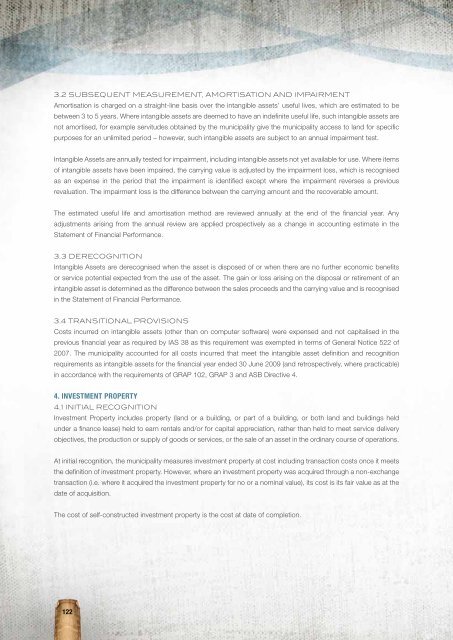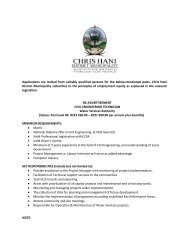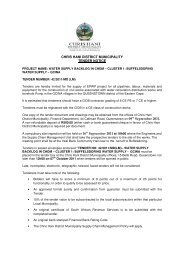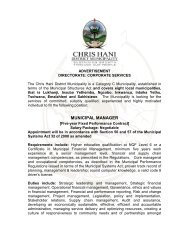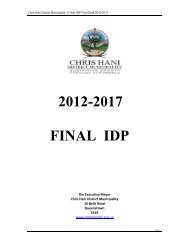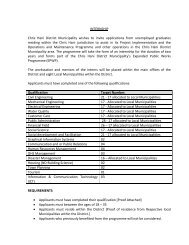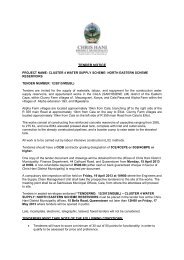Entire Document - Chris Hani District Municipality
Entire Document - Chris Hani District Municipality
Entire Document - Chris Hani District Municipality
You also want an ePaper? Increase the reach of your titles
YUMPU automatically turns print PDFs into web optimized ePapers that Google loves.
3.2 Subsequent Measurement, Amortisation and Impairment<br />
Amortisation is charged on a straight-line basis over the intangible assets’ useful lives, which are estimated to be<br />
between 3 to 5 years. Where intangible assets are deemed to have an indefinite useful life, such intangible assets are<br />
not amortised, for example servitudes obtained by the municipality give the municipality access to land for specific<br />
purposes for an unlimited period – however, such intangible assets are subject to an annual impairment test.<br />
Intangible Assets are annually tested for impairment, including intangible assets not yet available for use. Where items<br />
of intangible assets have been impaired, the carrying value is adjusted by the impairment loss, which is recognised<br />
as an expense in the period that the impairment is identified except where the impairment reverses a previous<br />
revaluation. The impairment loss is the difference between the carrying amount and the recoverable amount.<br />
The estimated useful life and amortisation method are reviewed annually at the end of the financial year. Any<br />
adjustments arising from the annual review are applied prospectively as a change in accounting estimate in the<br />
Statement of Financial Performance.<br />
3.3 Derecognition<br />
Intangible Assets are derecognised when the asset is disposed of or when there are no further economic benefits<br />
or service potential expected from the use of the asset. The gain or loss arising on the disposal or retirement of an<br />
intangible asset is determined as the difference between the sales proceeds and the carrying value and is recognised<br />
in the Statement of Financial Performance.<br />
3.4 Transitional Provisions<br />
Costs incurred on intangible assets (other than on computer software) were expensed and not capitalised in the<br />
previous financial year as required by IAS 38 as this requirement was exempted in terms of General Notice 522 of<br />
2007. The municipality accounted for all costs incurred that meet the intangible asset definition and recognition<br />
requirements as intangible assets for the financial year ended 30 June 2009 (and retrospectively, where practicable)<br />
in accordance with the requirements of GRAP 102, GRAP 3 and ASB Directive 4.<br />
4. INVESTMENT PROPERTY<br />
4.1 Initial Recognition<br />
Investment Property includes property (land or a building, or part of a building, or both land and buildings held<br />
under a finance lease) held to earn rentals and/or for capital appreciation, rather than held to meet service delivery<br />
objectives, the production or supply of goods or services, or the sale of an asset in the ordinary course of operations.<br />
At initial recognition, the municipality measures investment property at cost including transaction costs once it meets<br />
the definition of investment property. However, where an investment property was acquired through a non-exchange<br />
transaction (i.e. where it acquired the investment property for no or a nominal value), its cost is its fair value as at the<br />
date of acquisition.<br />
The cost of self-constructed investment property is the cost at date of completion.<br />
122


